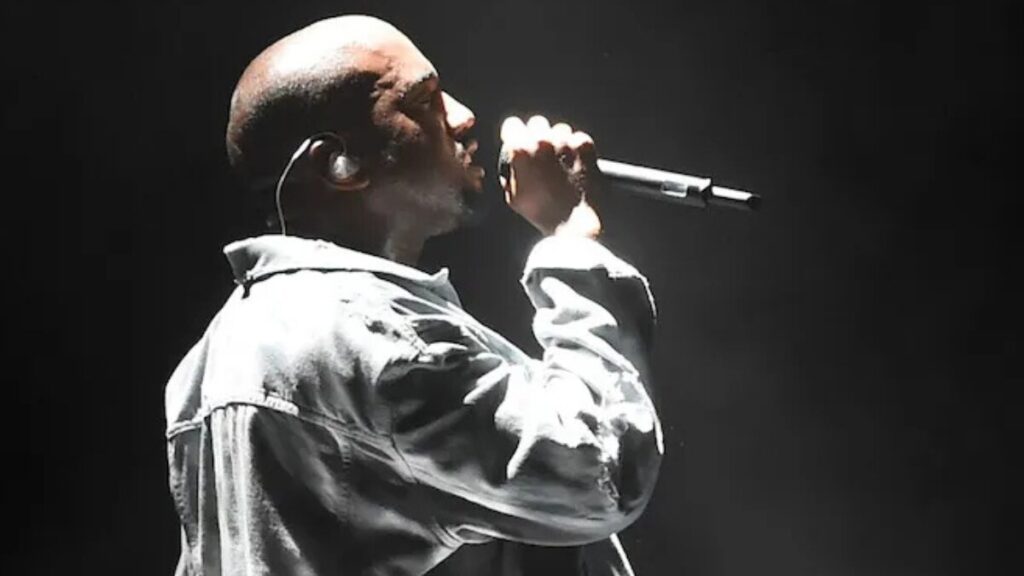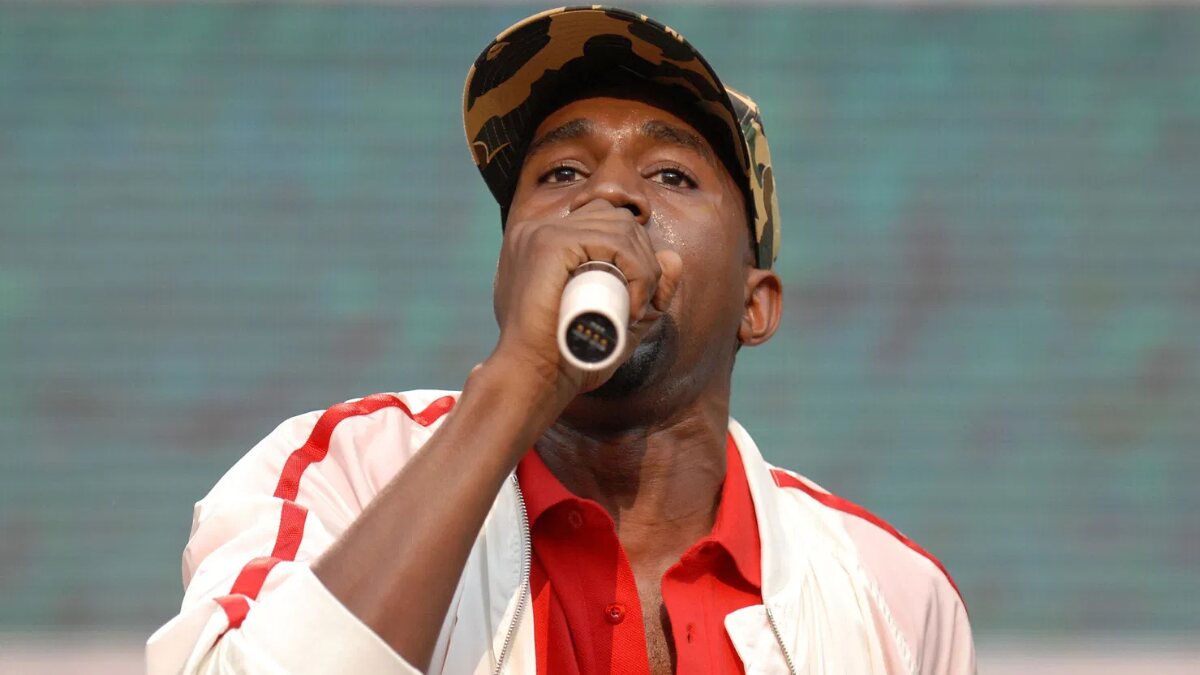It’s not the platinum records or sold-out arenas that keep Kanye West’s legend alive — it’s the ghosts. The music you’ve never heard. The stages that never lit up. The half-formed visions that slipped through his fingers before the world could grab hold. For every era-defining release, there’s a shadow twin: unreleased Kanye songs traded in grainy snippets, cancelled tours erased from calendars overnight, and whispered hip-hop industry rumors about projects so bold they might have rewritten his story.
Kanye’s vault is less a tidy archive than a storm — unfinished albums drifting in and out of existence, demos leaking like messages from another timeline, and plans scrapped mid-stride for reasons only he fully understands. What drives an artist to abandon brilliance? Are these lost works casualties of perfectionism, or collateral damage from a restless mind always chasing the next thing?
Step inside, and the line between chaos and genius starts to blur.
The Mythology of Kanye’s Unfinished Masterpieces
In the world of music, few things stir the imagination like what you can’t hear. Prince’s vault is said to hold decades of unheard brilliance, and Dr. Dre’s Detox became a hip-hop mirage, always promised but never delivered. Yet Kanye West’s cache of unreleased work feels different — less like a locked archive and more like a shifting landscape, where tracks appear, vanish, and sometimes reemerge years later in new forms.
Part of the fascination comes from the psychology of scarcity. A polished album arrives with liner notes and marketing campaigns; an unfinished track arrives with mystery. Studio leaks — rough mixes, voice memos, half-complete beats — give fans a glimpse behind the curtain, feeding speculation about what could have been. In Kanye’s case, these fragments become cultural artifacts, dissected frame by frame on forums, Reddit threads, and TikTok clips.
Social media has amplified the mythology, turning every rumor of Kanye’s unreleased albums into a viral event. A blurry screenshot from a studio session can spark days of debate. An offhand comment from a collaborator about “scrapped hip-hop tracks” becomes a breadcrumb in the larger treasure hunt. The more incomplete the picture, the more fans want to finish it themselves — a game Kanye seems to understand all too well.
Kanye’s vault isn’t just a collection of abandoned music. It’s an evolving story, one that thrives in the tension between what’s shared and what’s withheld. And in that space, myth becomes part of the music.
Yandhi: The Album That Never Arrived (But Never Died)
The Leaks That Ignited a Movement
When Kanye West announced Yandhi in September 2018, the rollout felt poised to be another cultural moment — billboards, cryptic tweets, and the promise of a sonically adventurous follow-up to Ye. But the album never dropped on its scheduled date. Instead, over the following months, fragments began slipping through the cracks. A Yandhi leak here, a demo there, each one fueling whispers that this might be the unreleased Kanye West album fans had been waiting for.
What happened next was less a passive listen and more a collective investigation. On Reddit, Discord servers, and niche hip-hop forums, fans compared audio quality, hunted for missing verses, and even launched “restoration” projects to rebuild Yandhi from the scattered leaks. Some created elaborate fan edits, merging unofficial tracks with Kanye’s previous work to imagine the album as it might have been.
By the time 2019 ended, Yandhi wasn’t just a scrapped record — it was a fan-driven movement, a communal act of musical archaeology keeping its ghost alive.
Why It Was Shelved
The disappearance of Yandhi remains one of the most puzzling chapters in Kanye West’s career. By late 2018, the Kanye 2018 album seemed nearly complete — multiple collaborators had confirmed recording sessions, and early leaks suggested a cohesive, futuristic sound. Then, without warning, the project was scrapped.
Some insiders point to Kanye’s notorious perfectionism, claiming he grew dissatisfied with the mixes and structure. Others believe label concerns over its experimental direction led to delays. But the most widely accepted theory links Yandhi’s demise to Kanye’s highly publicized spiritual pivot. Within months, he announced Jesus Is King, a gospel-forward project that marked a dramatic gospel music transition and sidelined the edgier, more secular Yandhi material.
In the music industry, abandoning a project at such an advanced stage is rare — especially for an artist of Kanye’s stature. But in his world, a scrapped release isn’t an accident; it’s a statement, even if the meaning remains as elusive as the music itself.
Tours That Vanished into Thin Air
The Saint Pablo Tour Collapse
The Saint Pablo Tour was already legendary before it crashed — a floating stage hovering above crowds, a setlist blending classics with deep cuts, and Kanye West performing like a prophet in motion. But in November 2016, the spectacle took a sharp turn. Mid-show in Sacramento, Kanye launched into a sprawling, unscripted rant, calling out fellow artists, the media, and even politics. Then he walked offstage. Hours later, news broke: the rest of the tour was over.
The Kanye concert cancellation sent shockwaves through fans and the music press. Some called it a creative burnout, others a public unraveling. The financial hit was steep — millions in refunded tickets and lost merchandise sales — but the reputational impact cut deeper. For months, headlines painted the collapse as one of hip-hop’s most high-profile live show controversies.
And yet, in true Kanye fashion, the abrupt end only added to his mythos. The floating stage was gone, but the story of its fall became part of his legend.
Other Tours That Never Materialized
Beyond the spectacle of the Saint Pablo Tour, Kanye West’s career is dotted with unrealized tour plans that remain the stuff of fan speculation. After the explosive Yeezus era, whispers circulated about a follow-up tour featuring an even more radical stage design — but it quietly evaporated before a single ticket went on sale. Years later, his Sunday Service performances sparked talk of a global run, blending gospel arrangements with immersive visuals, yet those cancelled hip-hop performances never left the concept stage.
Each of these phantom tours leaves behind only fragments — leaked stage mockups, insider quotes, half-confirmed dates. They’re tantalizing reminders that in Kanye’s world, the most fascinating shows are sometimes the ones that never happen, existing only in the imaginations of those who believed they might.
Inside the Creative Whirlwind: Recording Sessions That Went Nowhere
Step inside a Kanye West studio session, and you’ll find a space that’s less a recording booth and more a living organism — constantly shifting, unpredictable, and brimming with possibility. Ideas spark and die in minutes. One moment, Kanye is layering gospel harmonies over a drill beat; the next, he’s scrapping the entire concept to chase a new melody humming in his head.
Collaborators have learned to keep up or get left behind. Producer Mike Dean has described sessions that stretched for days, only for Kanye to shelve the results without hesitation. Ty Dolla $ign has recalled recording hooks deep into the night, wondering if they’d ever see daylight. Even Kid Cudi, a frequent creative partner, has watched Kanye’s unreleased songs vanish into the archives — brilliant studio session stories destined to become legend instead of tracklists.
For some, it’s exhilarating to witness an artist willing to discard great material in pursuit of something greater. For others, it’s frustrating to watch potential classics become discarded tracks overnight. But in Kanye’s world, the process matters as much as the product. The vault isn’t just where songs go to die — it’s where they wait, suspended in the chaos, for the rare chance to be reborn.
How Kanye’s Unreleased Vault Compares to Other Music Icons
If Prince’s vault is the gold standard of secrecy—miles of tape sealed behind a door—Kanye’s is the opposite: a living, breathing ecosystem that spills into the timeline without warning. Prince’s cache is monumental, but largely fixed; posthumous curators decide what escapes. Kanye’s hip-hop vault recordings feel perpetually in flux, mutating through snippets, reference tracks, and sudden reversals. The result isn’t just quantity; it’s a distinct cultural rhythm where leaks and “almost-releases” become part of the art.
Consider Dr. Dre’s Detox, perhaps the most legendary unreleased album of the 21st century. Its myth rests on absence: a perfect idea never corrupted by reality. Kanye’s “lost music culture” is more participatory. Fans encounter fragments—demo stems, rough mixes—and assemble their versions, arguing over sequencing like amateur A&Rs. Where Detox is a locked door, Kanye’s vault is a revolving one.
Frank Ocean operates somewhere in between. His world favors intentional scarcity: cryptic live debuts, limited streams, and songs that surface only to vanish. The difference is tone—Ocean’s minimalism reads as austerity; Kanye’s as improvisation under stage lights. Both generate obsession, but Ocean’s myth is curated distance, while Kanye’s is public experimentation.
Then there’s André 3000, whose rare releases and elliptical appearances heighten every whisper of a hidden project. With André, the vault’s power comes from restraint; with Kanye, from velocity. One builds tension by withholding; the other by oversupplying and retracting.
When Leaks Change the Course of an Album
In 2007, Kanye West learned firsthand how a leak could rewrite an album’s destiny. Weeks before Graduation was set to drop, rough cuts began circulating online. The Kanye demo leaks weren’t polished, but they were enough to prompt last-minute tweaks—altered mixes, re-recorded verses, and in some cases, entirely new production layers. It was an early glimpse into the music leak consequences that would follow him throughout his career.
In the streaming era, the stakes have shifted. Leaks can spoil a rollout, undercut streaming numbers, and rob an artist of control over their narrative. But for Kanye, they can also spark creative pivots. Entire album changes after leaks—from tracklist reshuffles to abandoned projects—have been part of his process, sometimes frustrating fans but just as often adding to his mythology.
Beyond Kanye, the industry has seen similar fallout. Madonna’s Rebel Heart was famously reworked after a massive pre-release leak. Drake has had tracks surface prematurely, reshaping release timelines. For smaller artists, a leak can be a career setback; for icons like Kanye, it can be a prompt to reinvent under pressure.
Leaks may be accidental breaches, but in Kanye’s world, they often become a kind of collaborative chaos—another unpredictable element in an already fluid creative storm.
The Night I Almost Heard “Yandhi” Live
I can still feel the bass in my chest. We were packed shoulder-to-shoulder in the arena, sweat and anticipation hanging in the air like static before a storm. The stage was dim, a single beam of light cutting through the haze. Someone near me swore they’d seen the Yandhi tracklist on a friend’s phone. Every time the sound tech tested a kick drum, the crowd erupted, convinced we were seconds away from history.
Then it happened—an unfamiliar beat dropped, strange and futuristic, unlike anything Kanye had released before. Gasps and shouts rippled through the room. A few seconds in, the lights shifted, and I caught a flash of Kanye, head down, pacing. The track cut abruptly. Silence. He mumbled something into the mic—too garbled to make out—and walked off.
For a moment, no one moved. Then the murmurs started: Was that Yandhi? Was it just a test? Was he scrapping it right in front of us?
We didn’t get answers. The lights came on, the house music returned, and thousands of us filed out in a daze. That night, I didn’t hear Yandhi—but I felt its ghost.
The Business Side of Scrapping an Album
Scrapping an album isn’t just an artistic decision — it’s a high-stakes financial gamble. By the time a major artist like Kanye West pulls the plug, the label may have already poured millions into recording sessions, marketing teasers, and planned tour tie-ins. The cost of cancelled albums can include sunk studio fees, shelved merchandise runs, and forfeited sponsorship deals.

In today’s music industry economics, an album isn’t just a product — it’s a launchpad for streaming revenue, ticket sales, and brand partnerships. A project like Yandhi could have driven tens of millions in Spotify and Apple Music plays alone, plus boosts in catalog streaming. When a record is abandoned, those revenue streams vanish.
Industry analysts note that scrapped album consequences can ripple across a label’s release calendar, forcing rescheduled drops and missed quarterly targets. Yet for an artist of Kanye’s stature, brand value and creative control often outweigh short-term losses. Walking away from a nearly finished record can be costly, but it also reinforces his image as an uncompromising creator — a narrative that, in the long run, might be worth more than the album itself.
What the Vault Tells Us About Kanye’s Legacy
Kanye West’s vault is both a blessing and a riddle. On one hand, the sheer volume of Kanye’s unreleased material adds to his legend. It paints him as a restless innovator, someone whose ideas outpace the market’s ability to absorb them. This abundance feeds the artist’s mythology that he operates on a different creative wavelength, where not every masterpiece needs to see daylight.
But there’s a flip side. For some, the constant scrapping and reshuffling hint at inconsistency, even chaos, casting doubt on his focus and discipline. The unfinished projects can feel like missed opportunities, moments where his brilliance could have been cemented but instead drifted into obscurity.
Looking ahead, the existence of such a deep archive raises questions about posthumous releases. Prince’s estate, Tupac’s vault, and Michael Jackson’s archives have all been mined for new albums after their deaths — sometimes with critical acclaim, other times with controversy over artistic intent. If Kanye’s vault is ever opened in that way, it could redefine his musical legacy for decades, introducing unheard chapters to a career already overflowing with reinvention.
Whether seen as a flaw or a feature, the vault ensures that Kanye’s story will never truly be finished — and perhaps that’s the most Kanye thing of all.
Art That Lives in the Shadows
Some artists are defined by the work they share; Kanye West is equally defined by the work he withholds. In his world, absence has weight. Songs exist in fragments, tours live only in rumor, and moments dissolve before they can harden into history.
Maybe that’s the point. The art we don’t hear leaves space for imagination, for the fan theories, the reconstructed tracklists, the “what if” conversations that stretch long after the lights go out. The vault isn’t just a storage room — it’s a parallel career, a shadow discography that challenges the idea that music must be fixed and final to matter.
In the end, Kanye’s unreleased work may never be neatly cataloged or complete. But perhaps the real masterpiece isn’t any single track — it’s the living, unfinished story of an artist who refuses to let even his silences be empty.
Mohit Wagh is the co-founder of The Graval with over 10 years of experience in SEO and content strategy. He specializes in crafting data-driven, authoritative content that blends cultural insight with digital growth.















5 thoughts on “Inside the Vault: Lost Albums, Cancelled Tours, and the Unreleased Chaos of Kanye West”